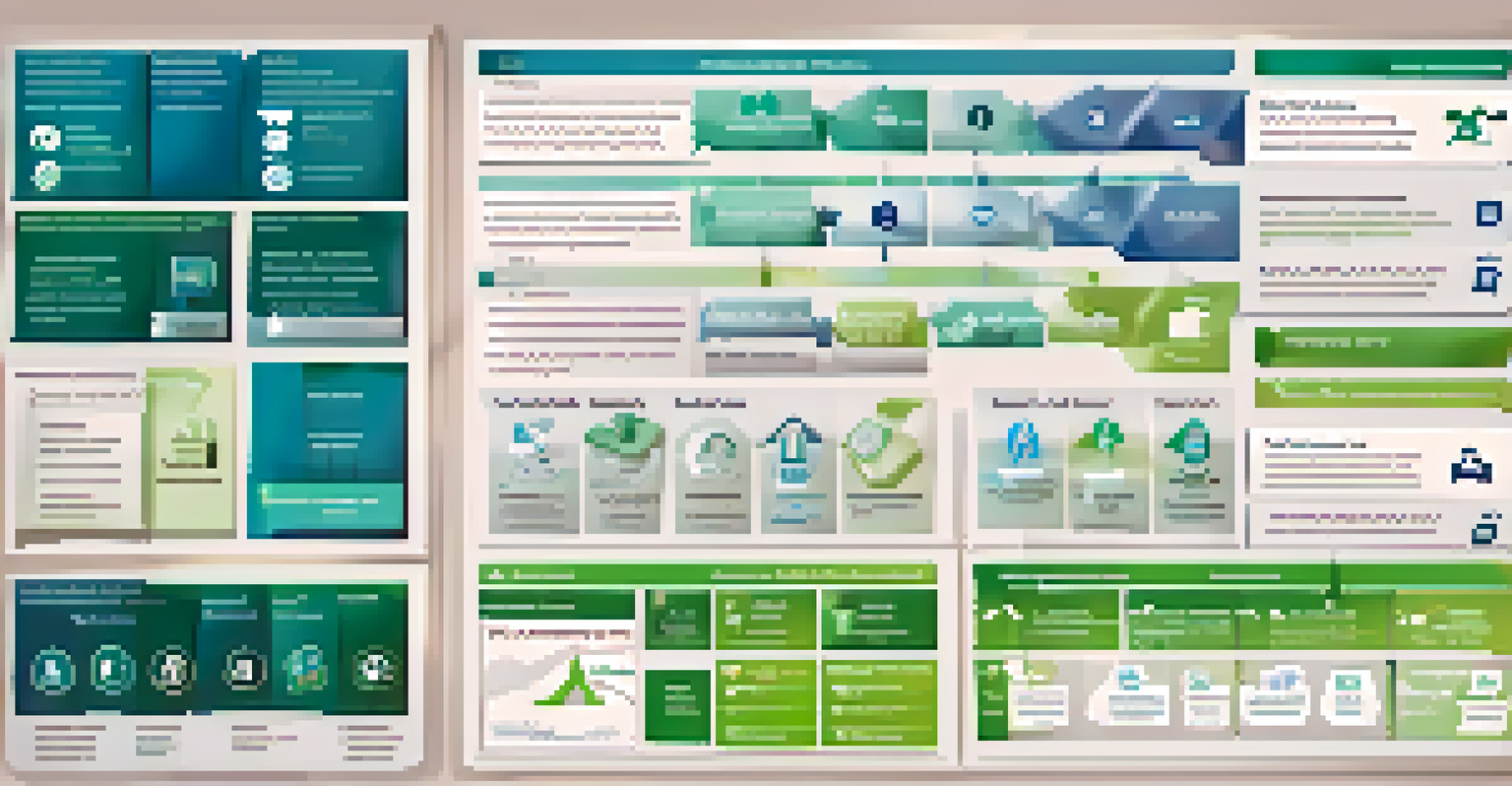The Role of Leadership in Risk Management Success

Understanding Risk Management and Its Importance
Risk management is the process of identifying, assessing, and controlling threats to an organization's capital and earnings. These threats could stem from a variety of sources, including financial uncertainty, legal liabilities, strategic management errors, and accidents. For businesses, effective risk management is crucial, as it helps minimize potential losses and ensures sustainability.
Risk management is not a one-time event, but a continuous process that requires the commitment of leadership and the engagement of all employees.
Leadership plays a pivotal role in shaping how risk management is perceived within an organization. When leaders prioritize risk management, it sets a tone that resonates throughout the company. This proactive approach fosters a culture where risks are openly discussed, and solutions are collaboratively sought, leading to better decision-making.
Moreover, effective risk management can enhance an organization's reputation and credibility. When leaders demonstrate a commitment to managing risks, it builds trust among stakeholders, employees, and customers. This trust is invaluable and can often translate into competitive advantage.
The Influence of Leadership Styles on Risk Management
Different leadership styles can significantly impact how risk management strategies are developed and implemented. For example, transformational leaders inspire and motivate their teams to innovate, which can lead to creative solutions for managing risks. On the other hand, transactional leaders might focus on structured processes, ensuring that risk management policies are followed strictly.

Additionally, a participative leadership style encourages input from team members at all levels, fostering an environment where diverse perspectives on risk can be shared. This inclusivity not only enhances the quality of risk assessments but also empowers employees, making them feel invested in the organization's success.
Leadership's Role in Risk Management
Effective risk management relies heavily on leadership to set a proactive tone and foster a culture of open communication around risks.
Ultimately, the leadership style adopted by an organization can either enhance or hinder its risk management efforts. Leaders must be aware of their approach and how it affects their team's engagement in risk-related discussions.
Establishing a Risk Management Framework
A well-defined risk management framework is essential for effective risk management. Leadership is responsible for establishing this framework and ensuring it aligns with the organization's goals and culture. This framework typically includes risk identification, assessment, response planning, and monitoring.
The greatest risk is not taking one. In a world that is changing really quickly, the only strategy that is guaranteed to fail is not taking risks.
Leaders must also ensure that the framework is communicated clearly throughout the organization. When employees understand their roles and responsibilities in risk management, they are more likely to participate actively. This clarity not only enhances engagement but also fosters a sense of ownership over risk management processes.
Moreover, a strong framework provides a systematic approach to managing risks, making it easier for teams to navigate challenges. With leadership's support, organizations can adapt their frameworks as needed, ensuring they remain relevant in a constantly changing environment.
Cultivating a Risk-Aware Culture
A risk-aware culture is one where employees recognize the importance of managing risks and feel empowered to act. Leadership plays a crucial role in cultivating this culture by modeling risk-aware behaviors and promoting open communication. When leaders openly discuss risks and their implications, it encourages employees to do the same.
Furthermore, celebrating successes related to risk management can reinforce positive behaviors. For instance, recognizing team members who effectively identify and mitigate risks can motivate others to adopt similar practices. This creates a ripple effect, where risk management becomes a shared priority across the organization.
Importance of a Risk Management Framework
Establishing a well-defined risk management framework is crucial for aligning risk strategies with organizational goals and ensuring clarity in employee roles.
In contrast, when leaders downplay risks or fail to address them, it can lead to a culture of complacency. Employees may feel discouraged to voice concerns, ultimately putting the organization at greater risk. Therefore, leadership must consistently foster an environment where risk management is valued and prioritized.
Leveraging Technology in Risk Management
In today's digital age, technology plays a vital role in effective risk management. Leaders must embrace technological tools that can enhance risk identification, analysis, and response. For example, data analytics can provide valuable insights into potential risks, allowing organizations to be proactive rather than reactive.
Moreover, technology can facilitate better communication and collaboration among teams. Tools such as project management software and communication platforms can help ensure that everyone is on the same page regarding risk management efforts. This interconnectedness is crucial, particularly in larger organizations where risks may be multifaceted.
However, it is essential for leaders to ensure that technology is implemented thoughtfully. Over-reliance on technology without proper oversight can lead to gaps in risk management. Therefore, leaders must strike a balance between leveraging technology and maintaining a human touch in their risk management processes.
Training and Development for Risk Management
Continuous training and development are vital for fostering effective risk management within an organization. Leaders should prioritize providing employees with the knowledge and skills necessary to identify and manage risks effectively. This can include workshops, seminars, or online courses that cover various aspects of risk management.
By investing in employee development, leaders not only enhance their team's capabilities but also demonstrate their commitment to risk management. When employees feel supported in their professional growth, they are more likely to engage actively in risk management initiatives. This engagement can lead to innovative solutions and a more resilient organization.
Continuous Training Enhances Resilience
Ongoing training and development equip employees with the necessary skills to identify and manage risks, ultimately contributing to a more resilient organization.
Furthermore, ongoing training ensures that employees stay updated on the latest trends and best practices in risk management. In a world where risks are constantly evolving, having a workforce that is well-informed and equipped to tackle challenges is essential for long-term success.
Measuring the Success of Risk Management Efforts
To understand the effectiveness of risk management strategies, organizations must have clear metrics in place. Leadership plays a key role in establishing these metrics and ensuring they align with the organization's objectives. Common metrics include the number of risks identified, the effectiveness of risk mitigation strategies, and overall business performance.
Measuring success not only helps identify areas for improvement but also demonstrates the value of risk management to stakeholders. When leaders can showcase tangible results from their risk management efforts, it reinforces the importance of these initiatives within the organization. This accountability encourages a commitment to continuous improvement in risk management practices.

Moreover, leaders should regularly review and adjust their risk management strategies based on these measurements. This iterative approach ensures that organizations remain agile and responsive to emerging risks, ultimately contributing to their long-term success.